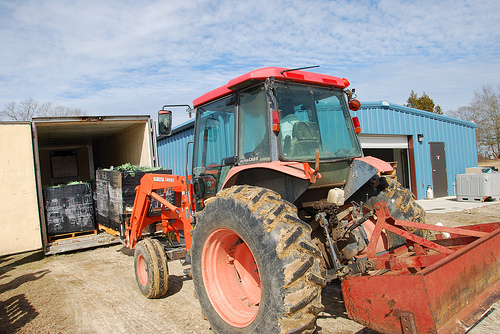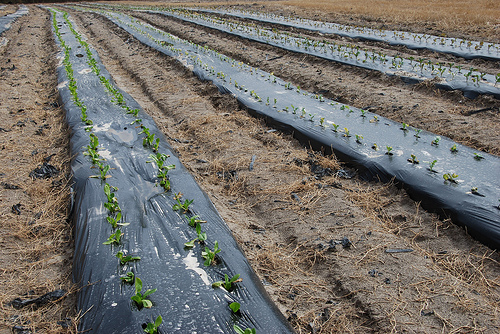Alabama Co-op Expands Market to Include Walmart

A seasonal high tunnel, built with assistance from the Natural Resources Conservation Service, helps the Hooks to expand their growing season.
Alphonso (Al) Hooks, a farmer from the Milstead community near Shorter, Ala. has expanded his produce-growing-and-processing operation from a small local concern to also being a supply source for regional Walmart stores.
A few years ago, Hooks formed Al Hooks Produce, a local cooperative involving him, his son, Demetrius, and four other local growers. The cooperative pools produce (mostly peas, cabbage and greens like collards and turnip greens) from the five farms for distribution to restaurants, grocery stores and nearby farmer’s markets, after it is washed and packaged in Hooks’ processing facility.
USDA’s Natural Resources Conservation Service (NRCS) has helped Hooks along the way as he’s worked to grow his operation. With NRCS assistance, for example, he implemented a microirrigation system that helps him deliver water in precise amounts to his plants’ roots. He also constructed a seasonal high tunnel that allows him to start producing crops earlier in the spring and harvest later in the season.

Al Hooks and his son host field days to share his success story with others interested in expanding their small farming businesses.
High tunnels have a metal frame wrapped in plastic and are easy and fairly cheap to build. They are designed to extend the growing season into the cold months, helping to increase productivity, keep plants at a steady temperature and even conserve water and energy. Hooks likes his first one so much, he plans to build two more.
And last year Al Hooks Produce was growing enough vegetables to accept another opportunity, to supply fresh local produce to the largest grocery retailer in the United States—Walmart. In October 2010, Walmart started the Heritage Agriculture Project to get local produce into its stores.
As a result, the Alabama Small Farm Rural Economic Development Center at Tuskegee University contracted with Walmart for local growers to supply two Alabama distribution centers with seasonal produce. And in July 2011, Al Hooks Produce started selling peas and greens to Walmart through the center.

Produce for market is stored in a cooler next to the processing building and is loaded on Walmart trucks using a tractor with a fork-lift attachment built by Al Hooks.
The pick-up process is convenient for both parties. Walmart trucks pick up the produce—even as little as one pallet—and bring it to the distribution center. This helps the stores keep their aisles stocked with fresh, local items.
Hooks’ son, Demetrius, says, “When we first started with Walmart, they had never bought greens or shelled peas from small farmers in this area.” He adds that their products are entirely local: “We even created the clam-shell plastic container that holds the peas.”
NRCS State Conservationist Dr. William Puckett finds an even greater significance to the Hooks’ story. As he puts it, “Al Hooks Produce is a prime example of how limited resource farmers can help meet larger demands for fresh produce.”
The USDA Know Your Farmer, Know Your Food Compass is a helpful reference, illustrating additional ways USDA is working to support local food. Use the map to discover other work in you community.
Follow NRCS on Twitter.
Check out other conservation-related stories on the USDA blog.

Hooks grows plants under plasticulture with micro-irrigation that helps target nutrients and water directly to the roots of the plants.
